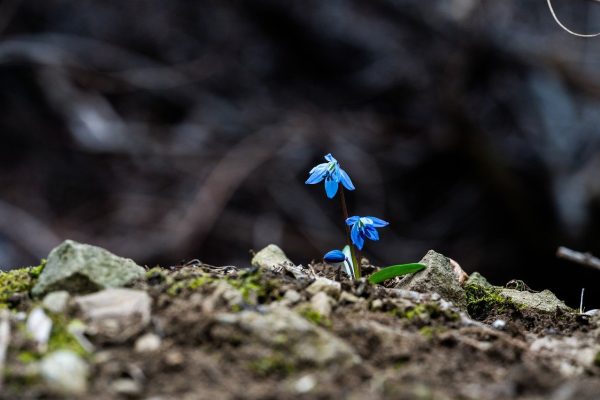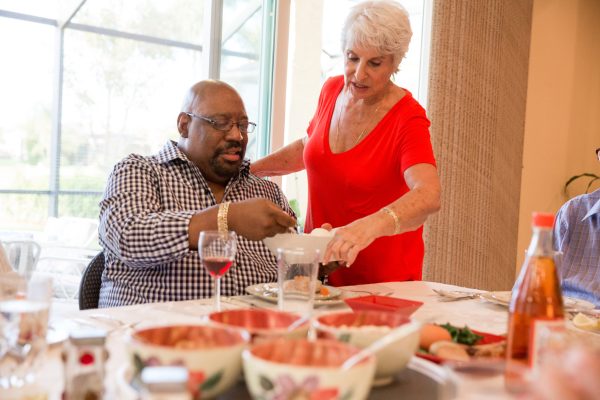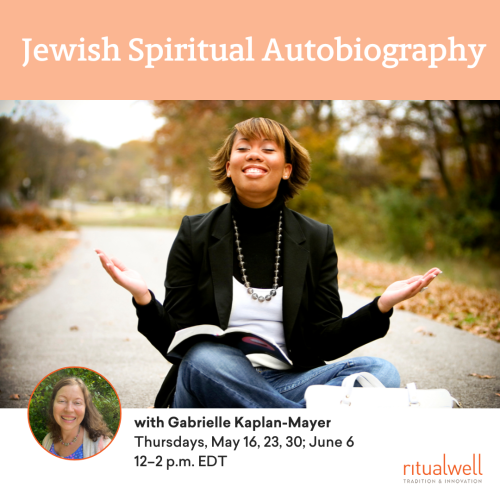This “Essence” is taken from the Sourcebook for Leaders, written by Rabbi RachelLavan's younger daughter and Jacob's beloved wife second wife (after he is initially tricked into marrying her older sister, Leah). Rachel grieves throughout her life that she is barren while Leah is so fertile. Ultimately, Rachel gives birth to Joseph and dies in childbirth with Benjamin. Rachel is remembered as compassionate (she is said to still weep for her children), and infertile women often invoke Rachel as a kind of intercessor and visit her tomb on the road to Bethlehem. Gartner and Barbara Berley Melits, for Rosh HodeshThe new moon, which marks the beginning of the Jewish month. According to tradition, because women did not participate in the sin of the golden calf, they were given the holiday of Rosh Chodesh. It is customary for women not to work on Rosh Chodesh.: It’s a Girl Thing! This experiential program was created by Kolot: The Center for Jewish Women’s and Gender Studies to strengthen the Jewish identity and self-esteem of adolescent girls through monthly celebrations of the New Moon festival. The program is now available through Moving Traditions.
Fast Facts
Nisan is the first month of the Jewish calendar.
Nisan comes at the same time as the secular months March/April.
The mazalGood fortune, luck, and the Hebrew sign of the Zodiac. (constellation) for Nisan is Aries, the taleh (ram).
Nisan has two additional names. The TorahThe Five Books of Moses, and the foundation of all of Jewish life and lore. The Torah is considered the heart and soul of the Jewish people, and study of the Torah is a high mitzvah. The Torah itself a scroll that is hand lettered on parchment, elaborately dressed and decorated, and stored in a decorative ark. It is chanted aloud on Mondays, Thursdays, and Shabbat, according to a yearly cycle. Sometimes "Torah" is used as a colloquial term for Jewish learning and narrative in general. calls Nisan Hodesh HaRishon (the First Month). Because the Israelites left Egypt in Nisan, it is the “first month” in the life of the Israelites as a free people. The Torah refers to the other months as second, third, etc., in relation to Nisan. The Torah also calls Nisan Hodesh Ha’Aviv (the Month of Spring) because spring arrives in Nisan.
The Hebrew word “Nisan” may be related to the Hebrew word nitzan, which means “bud.” Nisan marks the birth of spring, signaled by the arrival of new buds and the birth of the Israelite nation. Physical and spiritual seeds are planted in Nisan—seeds for the summer crop and seeds of freedom and liberation.
MiriamMiriam is the sister of Moses and Aaron. As Moses' and Aaron's sister she, according to midrash, prophesies Moses' role and helps secure it by watching over the young baby, seeing to it that Pharaoh's daughter takes him and that the baby is returned to his mother for nursing. During the Israelites' trek through the desert, a magical well given on her behalf travels with the Israelites, providing water, healing, and sustenance., the Prophet, the sister of MosesThe quintessential Jewish leader who spoke face to face with God, unlike any other prophet, and who freed the people from Egypt, led them through the desert for forty years, and received the Torah on Mt. Sinai. His Hebrew name is Moshe. and AaronBrother of Moses, chosen as Moses' interlocutor. His Hebrew name is Aharon., died on the 10th of Nisan.
Rosh Hodesh Nisan is a special Rosh Hodesh because:
On Rosh Hodesh Nisan the Israelites received the commandment to sanctify the new moon. This was the first commandment we received as a free nation.
According to midrash (rabbinic legends about the Bible), it was on Rosh Hodesh Nisan that the mishkan (the temporary sanctuary which the Israelites used as they wandered in the desert and in the Land of IsraelLit. ''the one who struggles with God.'' Israel means many things. It is first used with reference to Jacob, whose name is changed to Israel (Genesis 32:29), the one who struggles with God. Jacob's children, the Jewish people, become B'nai Israel, the children of Israel. The name also refers to the land of Israel and the State of Israel. before Solomon built the first Temple) was inaugurated (BaMidbar Raba, Chapter 13).
Because Nisan is the first of the twelve months, Rosh Hodesh Nisan is considered the New Year for the Months.
1) PesachPassover is a major Jewish holiday that commemorates the Jewish people's liberation from slavery and Exodus from Egypt. Its Hebrew name is Pesakh. Its name derives from the tenth plague, in which God "passed over" the homes of the Jewish firstborn, slaying only the Egyptian firstborn. Passover is celebrated for a week, and many diaspora Jews celebrate for eight days. The holiday begins at home at a seder meal and ritual the first (and sometimes second) night. Jews tell the story of the Exodus using a text called the haggadah, and eat specific food (matzah, maror, haroset, etc). (PassoverPassover is a major Jewish holiday that commemorates the Jewish people's liberation from slavery and Exodus from Egypt. Its Hebrew name is Pesakh. Its name derives from the tenth plague, in which God "passed over" the homes of the Jewish firstborn, slaying only the Egyptian firstborn. Passover is celebrated for a week, and many diaspora Jews celebrate for eight days. The holiday begins at home at a seder meal and ritual the first (and sometimes second) night. Jews tell the story of the Exodus using a text called the haggadah, and eat specific food (matzah, maror, haroset, etc).)
Pesach (Passover) begins on the 15th of Nisan and continues for seven days, through the 21st of Nisan, though many Diaspora communities celebrate it for eight days. The Hebrew word pesach literally means “pass over.” The holiday of Passover gets its English name from the Exodus story: prior to the tenth plague, God commanded the Israelites to smear blood from a sacrificial paschal (“pass over”) lamb on the doorposts of their homes. God then “passed over” the Israelite homes and took the lives of the Egyptian firstborn only.
Passover is also called Zeman Heiruteinu (the Season of our Liberation) because it celebrates the liberation of the Israelites from Egyptian slavery. A third name for Passover is Hag Ha’aviv (the Holiday of Spring). A final name for Passover is Hag Ha’matzot (the Holiday of the Unleavened Bread), marking the time when the Israelites, fleeing from Pharaoh, had no time to let the dough rise for bread and were left with flat matzahThe unleavened bread eaten on Passover that recalls the Israelite's hasty escape from Egypt when there was no time for the dough to rise. Matzah is also considered the "bread of our affliction," eaten while we were slaves. as their only food.
The story of Passover begins in slavery and ends in freedom. It celebrates the faith and courage of the Israelites who willingly left their homes in Egypt and set out for the unknown. On Passover we anticipate the time when all Jews and all peoples will be free.
2) Passover Customs
Participating in Seders. On the first and (for many people the) second nights of Passover (and in some communities on the seventh and eighth nights as well), it is customary to gather in families or groups for a sederLit. Order. The festive meal conducted on Passover night, in a specific order with specific rituals to symbolize aspects of the Exodus from Egypt. It is conducted following the haggadah, a book for this purpose. The mystics of Sefat also created a seder for Tu B'shvat, the new year of the trees.. The Hebrew word “seder” simply means “order.” The Passover seder includes rituals arranged in a particular order designed to help us relive the Passover story. Both the rituals and the story of Passover are described in detail in the haggadahLit. "Telling.” The haggadah is the book used at the seder table on Passover to tell the story of the Exodus, the central commandment of the holiday. It is rich in song, prayer, and legend. There are many different version of the Haggadah produced throughout Jewish history., the liturgical text we read together at the seder.
The seder includes rituals such as eating matzah and marorBitter herbs eaten at the Passover seder to recall slavery in Egypt (bitter herbs), drinking four cups of wine or juice, singing songs, dipping greens into salt water, and eating a meal. These rituals remind us both of the bitterness of slavery and the sweetness of liberation. The ritual of the Four Questions in which children ask, “Why is this night different from all other nights?” highlights the importance Judaism places on passing down traditions from generation to generation. The ritual of removing one drop of wine or juice from our cups for every plague suffered by the Egyptian citizens emphasizes the Jewish value that we should never rejoice in the suffering of others, even our enemies.
Refraining from eating or owning hametzLit. Leavening Any food made of grain and water which has fermented and risen and is thus prohibited to be eaten during Passover.' (leavened bread). The Torah states, “On the very first day, you shall remove leaven from your houses, for whoever eats leavened bread from the first day to the seventh day, that person shall be cut off from Israel ” (Exodus 12:15). It is customary to try to rid our homes of hametz during the weeks before Passover and to hold a final search for any remaining hametz on the night before Passover. The next morning we burn whatever hametz remains and renounce ownership of any hametz we might have overlooked. Removing hametz can symbolize our liberating ourselves from anything that holds us back from the pursuit of freedom for ourselves and for all peoples. We recommend that if you rid your home of hametz, donate it to a local food bank.
Tambourines. After the miracle of the parted waters when the Israelites crossed the sea, the Torah says: “And Miriam the prophetess, the sister of Aaron, took a timbrel in her hand; and all the women went out after her with timbrels, dancing ” (Exodus 15:20) . Many communities include tambourines on their seder tables for use during the songs and rituals of the seder.
Miriam’s Cup (Kos Miriam). This is a new ritual object for the seder table that has been introduced to remind us of women’s important role in redemption. Just as Elijah’s Cup, filled with wine, expresses our hope for peace in a Messianic future, Miriam’s Cup, filled with spring water, expresses our gratitude for the miracles of the past and present. The water reminds us of the river beside which Miriam watched Moses, the Red Sea beside which she danced, and the legendary well that accompanied Miriam in the desert.
Saving the AfikomenThe broken half of the middle matzah, hidden by the leader of the seder and ransomed back by the children. The seder meal cannot be completed without the return and eating of the afikomen as the desert.. There is a folk tradition that the afikomen (a piece of matzah saved at the beginning of the seder for dessert) is an amulet for good luck; some people save a piece of it for the entire year!
Reciting Shir HaShirim (The Song of Songs). Many communities recite Shir HaShirim either after the seder or before the Torah reading on the ShabbatShabbat is the Sabbath day, the Day of Rest, and is observed from Friday night through Saturday night. Is set aside from the rest of the week both in honor of the fact that God rested on the seventh day after creating the world. On Shabbat, many Jews observe prohibitions from various activities designated as work. Shabbat is traditionally observed with festive meals, wine, challah, prayers, the reading and studying of Torah, conjugal relations, family time, and time with friends. that falls during Passover. The traditional interpretation of Shir HaShirim is that it is a love song between God and Israel and thus is especially appropriate to recite on Passover, “which might be viewed as the onset of the love affair between God and Israel which culminates fifty days later in”1 their symbolic marriage on ShavuotShavuot is the holiday fifty days after Passover and commemorates when the Israelite liberation from Egypt culminates with the giving of the Torah. Traditionally, Jews study in an all-night study session, eat dairy products (one interpretation is that the Torah is like milk to us), and read both the Ten Commandments and the Book of Ruth.. Shir HaShirim is filled with images of spring and nature and first love, all of which are fitting for Hag Ha’aviv (the Holiday of Spring).
3) Counting the OmerFrom the second day of Passover until Shavuot, Jews count seven weeks – seven times seven days – to commemorate the period between the Exodus from Egypt and the Revelation at Sinai. When the Temple stood, a certain measure (omer) of barley was offered on the altar each day; today, we merely count out the days.
In Leviticus, the third book of the Torah, it says, “You shall count … from the day that you brought the omer as a wave offering” (Leviticus 23:15). The omer was a measure of barley that Jews brought as an offering to the Temple on the second day of Passover. The Bible tells us to count 49 days from the bringing of the omer until the eveEve, according to the book of Genesis, is Adam's wife, the first woman to be created. of Shavuot. Although we no longer bring barley to the Temple, these seven weeks are still known as “The Omer,” and the ritual of counting each night is known as “Counting the Omer.”
The kabbalists (Jewish mystics) saw the omer period as a time for preparing ourselves to receive Torah on Shavuot by reflecting on one’s personal qualities. They taught that during each week of the omer we should meditate on a different spiritual quality. The kabbalists associated each spiritual quality with a color and with a part of the body. Later thinkers associated each quality with a woman from Jewish history.
4) Yom HaShoah (HolocaustThe genocide of millions of European Jews--as well as other ethnic, religious and minority groups--by the Nazis during World War II. The tragic events of the Holocaust are now commemorated each year on Yom HaShoah; established in 1952 by the Israeli government. Shoah (calamity) has become the term used to describe the systemic mass slaughter that occurred during World War II. Memorial Day)
Yom HaShoah (Holocaust Memorial Day) is observed on the 27th day of Nisan. Yom HaShoah was established by the Israeli government to commemorate the Holocaust and its victims. In Israel, banks, schools, most businesses and theaters, and other places of entertainment are closed on this day. Memorial services are held in Israel and across the globe.
5) Fabulous Females
ShifraShifra is one of the two Hebrew midwives mentioned in Exodus 1 who refuses Pharaoh's orders to kill the boy children, instead enabling them to live. She, along with her partner Puah, is instrumental in beginning the process leading to the Exodus. Shifra is often identified as Jochebed, Moses' mother. and PuahPuah, like Shifra, is one of the Hebrew midwives mentioned in Exodus 1 who defies Pharaoh's orders to kill the boy babies. This first act of defiance was instrumental in leading to the Israelite exodus from Egypt. Puah is often identified in the midrash with Miriam, Moses' older sister. are the Hebrew midwives whose heroism begins the Exodus story. Although the Torah does not record Shifra and Puah’s own words, a contemporary women’s haggadah imagines their thoughts: “We, Shifra and Puah, were slaves to Pharaoh in Egypt. We were also midwives and respected leaders in our community. When Pharaoh decreed that we put all baby boys to death, we were not able to comply. For we felt the mighty hand of God in our outstretched arms as we helped bring Israelite infants into the world.”
Shifra and Pu’ah remind us that the big changes that improve the lives of multitudes begin with the small, brave actions of the few. Each one of us has an important part to play in the redemption of the Jewish people and of the world.
Yocheved is the courageous and loving mother of Miriam, Moses, and Aaron. When Moses was born, Yocheved risked her life to save him from Pharaoh’s decree to kill all the male Hebrew newborns. Yocheved hid Moses in her home for three months, and then when she could hide him no longer, she placed him in a basket and set it afloat on the Nile River.
Yocheved reminds us of the risks and sacrifices that mothers make for their children in every generation. As we imagine her sending her son away to an unknown fate, she inspires our empathy for all mothers who watch their children go on their way, sometimes to places of danger. May she inspire us to express our gratitude for the dedication of our own mothers.
Pharaoh’s daughter is the brave and defiant Egyptian woman who rescues Moses from the Nile and raises him to adulthood. Although the Torah simply calls her Bat Paroh (Pharaoh’s daughter), the rabbis rename her BatYah (Daughter of God). The midrashA rabbinic method of interpreting text, often through the telling of stories. teaches that although Moses was floating at a far-off distance from Batya, she was able to save him because God miraculously lengthened her arm.
Pharaoh’s daughter teaches us that compassion transcends difference, that the value of life transcends all of our cultural boundaries, and that if we are alert to opportunity, we too might be lifesaving agents.
Miriam is the sister of Moses and Aaron. We first meet Miriam as she watches over Moses, afloat in the basket his mother made for him. When she sees Pharaoh’s daughter take Moses out of the Nile, Miriam, a mere slave, speaks to the princess and suggests that she getA writ of divorce. Traditionally, only a man can grant his wife a get. Liberal Jews have amended this tradition, making divorce more egalitarian. a Hebrew woman to nurse the baby. Never telling the princess about her own relationship to Moses, Miriam arranges for Yocheved to become Moses’ nurse. Miriam’s fearlessness and self-confidence at this early age indicate the kind of woman she was to become.
The next time we meet Miriam she is an adult, and she is leading the women in song and dance after they passed through the parted sea. Here, she is called a nivea (prophetess). Miriam had become an important leader of her people; she played a central role in founding the Israelite nation, in strengthening the people’s spirits, and in inspiring them to sing and rejoice.
We next encounter Miriam as she is once again speaking out bravely, only this time to reprimand her brother. The Torah says that Miriam, along with Aaron, spoke out against Moses regarding his wife. It is unclear what Miriam found displeasing in the situation. Perhaps Miriam was speaking to Moses on behalf of his wife, reprimanding him for spending too much time leading the nation and not enough time with his wife. Perhaps Miriam had become jealous of Moses’ wife, feeling that she was unfairly infringing on Miriam’s own role as leader of the women. Or perhaps Miriam was angry that Moses was receiving more attention in the Torah than she was. After all she was an important leader too. Although God punished Miriam with leprosy for her words against her brother, the people remained her devoted followers. While Miriam lived out her seven-day punishment in seclusion, the entire nation ceased its travels through the desert, lovingly awaiting her return. When Miriam died, the people mourned, and the earth was dry.
————————-
1. Arthur Waskow, Seasons of Our Joy (New York: Bantam Books, 1982), p. 153.












